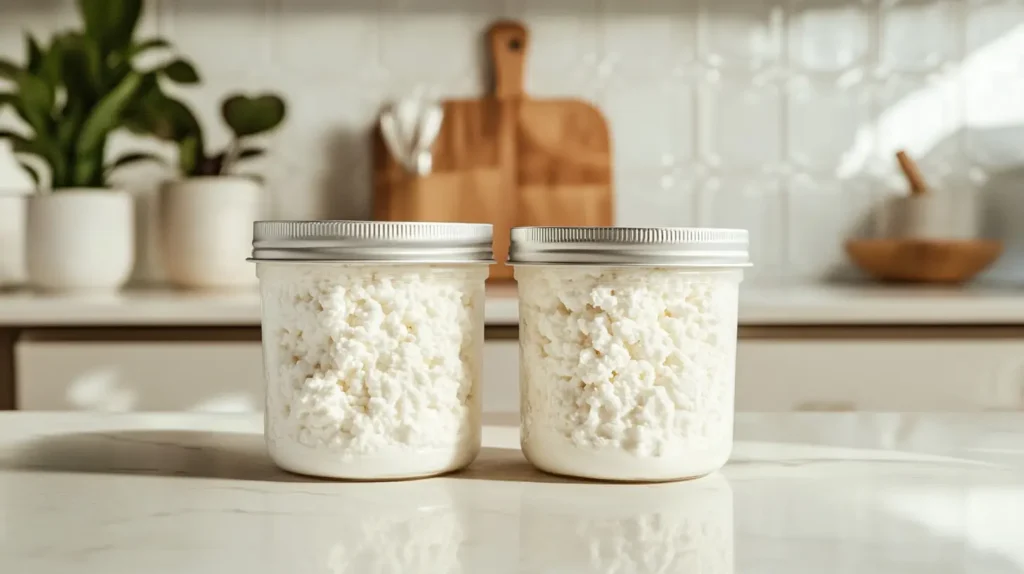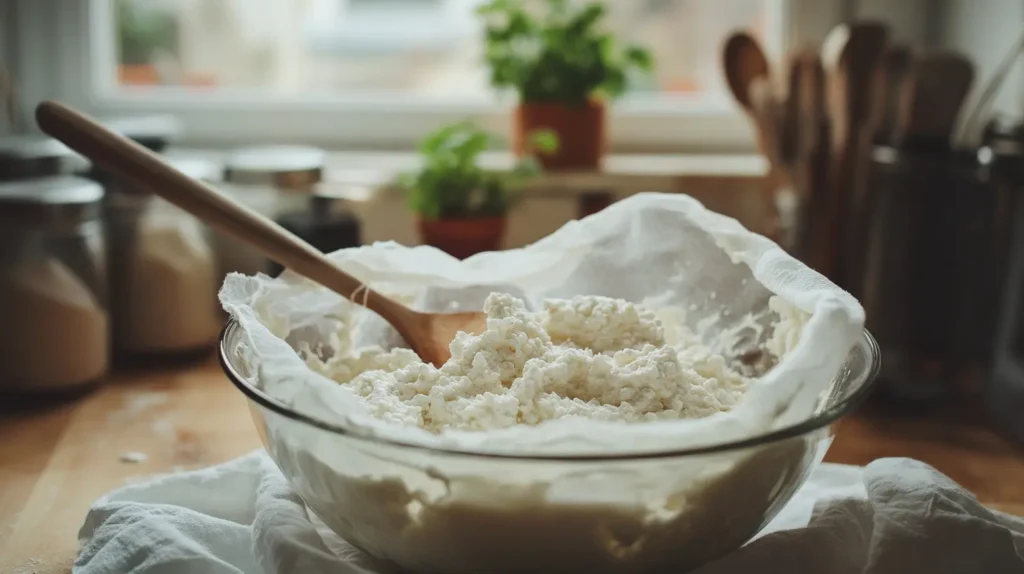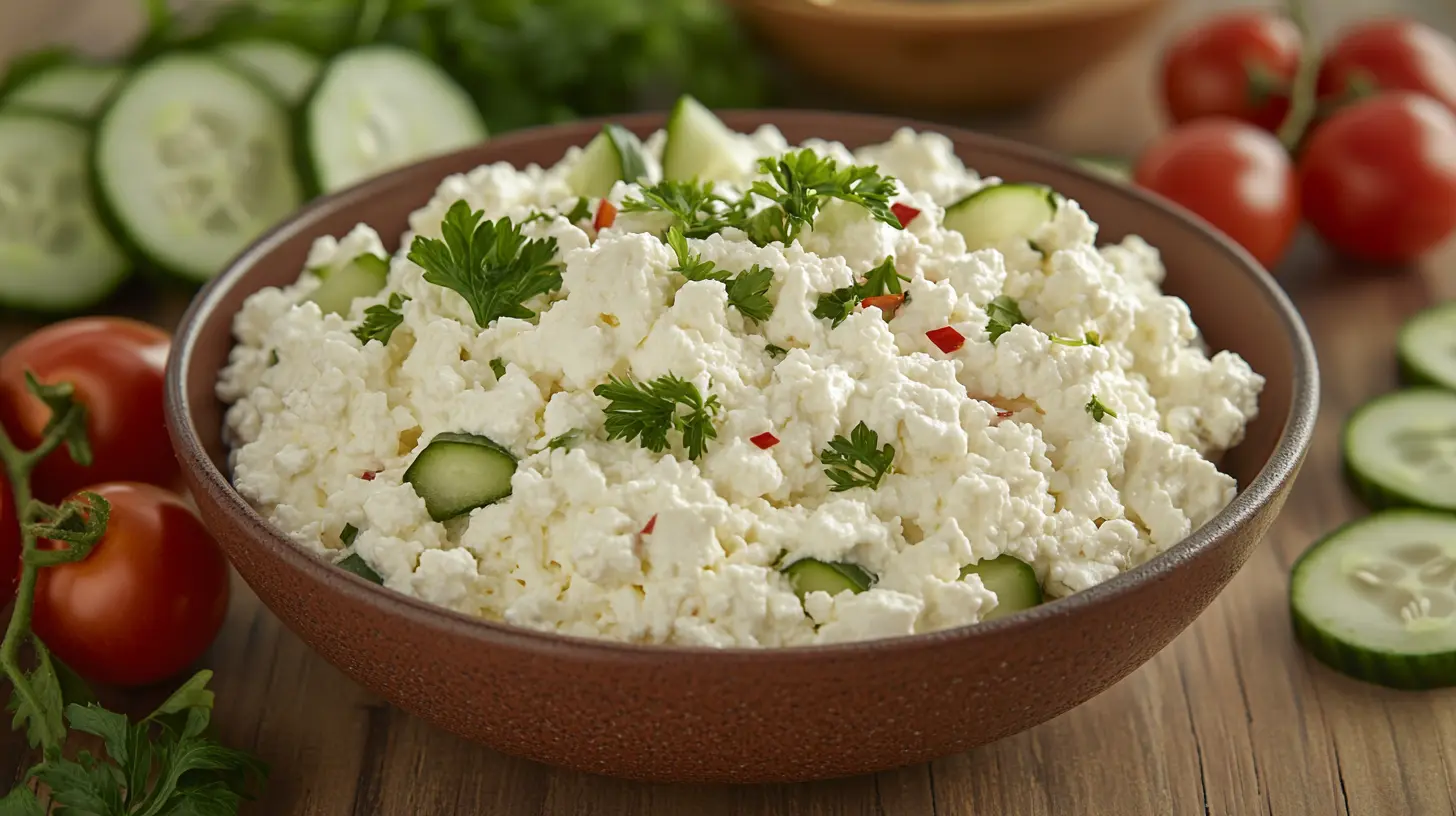The Ultimate Guide
Introduction
Cottage cheese is a household favorite for its creamy texture, high protein content, and versatility in meals and snacks. However, the traditional version often contains significant amounts of sodium, which isn’t ideal for everyone. For those watching their sodium intake, low salt cottage cheese offers a fantastic alternative that retains all the nutritional benefits while being kinder to your heart and overall health.
In this guide, we’ll explore everything you need to know about low salt cottage cheese—from understanding its benefits and how it differs from regular varieties, to discovering the best low sodium cottage cheese brands, and even learning how to make it at home. Whether you’re looking for sodium-free cottage cheese, no salt added cottage cheese, or simply wondering where to buy low sodium cottage cheese, this comprehensive guide has you covered.
Low salt cottage cheese isn’t just for those on a restricted diet; it’s a delicious and nutritious option for anyone looking to make healthier choices. So, let’s dive into the world of low sodium and unsalted cottage cheese and find the perfect fit for your lifestyle and taste preferences.
Table of contents
Understanding Low Salt Cottage Cheese

What Is Low Salt Cottage Cheese?
Finding the perfect balance between health and taste is essential when choosing cottage cheese with less sodium. While some no-salt-added varieties may seem a bit bland on their own, they’re ideal for customization. Try adding fresh herbs, a drizzle of honey, or chopped vegetables to elevate the flavor.
If taste is a priority, slightly reduced sodium options can deliver more flavor while remaining a healthier choice compared to regular versions. Brands like Hood and Nancy’s do an excellent job of offering products that strike a great balance between health and taste.
Enjoying cottage cheese doesn’t mean compromising on flavor. By selecting the right brand and experimenting with creative pairings, you can make it a delicious, heart-healthy addition to your meals.
Why Choose Low Sodium Cottage Cheese?
Reducing sodium in your diet has numerous health benefits, especially for individuals at risk of hypertension, cardiovascular diseases, or kidney issues. Here’s why low salt cottage cheese is a great option:
- Heart Health: A low-sodium diet can help lower blood pressure and reduce the risk of heart disease.
- Kidney Function: Too much sodium can strain the kidneys, so reducing intake supports kidney health.
- Better Taste Control: With less salt, you can customize the flavor of your cottage cheese by adding herbs, fruits, or spices.
- Weight Management: Like traditional varieties, low sodium cottage cheese is high in protein, which helps keep you feeling full and satisfied.
Who Should Eat Low Salt Cottage Cheese?
Low salt cottage cheese is an excellent choice for anyone looking to reduce their sodium intake or adopt a healthier lifestyle. Specific groups who may benefit include:
- Individuals with Hypertension: Lower sodium intake helps manage high blood pressure effectively.
- People Following Low-Sodium Diets: Diets like DASH (Dietary Approaches to Stop Hypertension) recommend reducing sodium consumption.
- Health-Conscious Individuals: Even if you don’t have health issues, reducing sodium can be a proactive step for long-term wellness.
- Athletes and Fitness Enthusiasts: The high protein content aids in muscle repair, and the reduced sodium prevents bloating.
Low salt cottage cheese isn’t just a dietary necessity for some; it’s a tasty, versatile, and healthier option that anyone can enjoy.
Best Low Sodium Cottage Cheese Options
Popular Low Salt Cottage Cheese Brands
When it comes to finding the best low sodium cottage cheese, several brands stand out for their quality, taste, and commitment to providing healthier options. These include:
- Friendship Dairies No Salt Added Cottage Cheese: Friendship is a top choice for those looking for cottage cheese with zero added sodium. It’s creamy, rich in protein, and perfect for pairing with fresh fruits or savory toppings.
- Lucerne Low Sodium Cottage Cheese: Known for its balanced flavor, Lucerne offers a lower sodium option that still tastes great.
- Hood Low Fat, No Salt Added Cottage Cheese: A fantastic choice for those who want a low-fat, sodium-conscious option without sacrificing taste or texture.
- Trader Joe’s Low Sodium Cottage Cheese: Trader Joe’s provides a tasty, affordable option for sodium-conscious shoppers.
- Nancy’s Probiotic Low Sodium Cottage Cheese: For a gut-healthy option, Nancy’s combines low sodium with live probiotic cultures.
Each brand has unique characteristics, so experimenting with a few options can help you find the perfect one to suit your taste and dietary needs.
Lowest Sodium Cottage Cheese Brands
If you’re searching for the lowest sodium cottage cheese, it’s essential to check the labels. Here are a few standout options with minimal sodium per serving:
- Friendship No Salt Added Cottage Cheese: Contains as little as 40 mg of sodium per serving, making it one of the lowest sodium options available.
- Hood No Salt Added Cottage Cheese: Another excellent choice with minimal sodium levels and a smooth, creamy texture.
- Daisy Low Sodium Cottage Cheese: Known for its clean ingredients and low sodium content, Daisy is a trusted brand for health-conscious consumers.
When selecting a brand, look for labels like “no salt added,” “reduced sodium,” or “unsalted.” These terms indicate that the product is designed to minimize sodium levels.
Best Low Sodium Cottage Cheese for Health and Taste
Finding the right balance of health and taste is key when choosing low salt cottage cheese. While some no-salt-added options may taste bland on their own, they are perfect for customization. Add fresh herbs, a drizzle of honey, or chopped vegetables for a flavor boost.
For those who prioritize taste, slightly reduced sodium versions can offer more flavor while still being healthier than regular varieties. Brands like Hood and Nancy’s strike an excellent balance between health and flavor.
Low salt cottage cheese doesn’t have to compromise on taste. By choosing the right brand and experimenting with pairings, you can enjoy a delicious, heart-healthy addition to your meals.
Where to Buy Low Salt Cottage Cheese
Where Can I Buy Low Sodium Cottage Cheese?
Finding low sodium cottage cheese is easier than ever, thanks to its growing popularity. Here’s where you can start your search:
- Major Grocery Stores: Chains like Walmart, Kroger, Safeway, and Publix typically stock low salt or no-salt-added cottage cheese options. Look in the dairy aisle near regular cottage cheese varieties.
- Specialty Health Food Stores: Stores like Whole Foods Market and Sprouts Farmers Market often carry premium low sodium brands, including those with organic or probiotic options.
- Big Box Retailers: Costco and Sam’s Club may have bulk options for low sodium cottage cheese, perfect for families or frequent use.
When shopping in-store, be sure to check the labels carefully to ensure you’re picking a low sodium cottage cheese.
Where to Buy Friendship No Salt Cottage Cheese
Friendship No Salt Cottage Cheese is a favorite among low-sodium enthusiasts. Here’s where you’re likely to find it:
- Local Grocery Stores: Friendship is widely available at chains like Stop & Shop, ShopRite, and Albertsons.
- Online Retailers: If it’s not in your local store, try online platforms like Instacart, FreshDirect, or Amazon Fresh. These services allow you to order directly to your doorstep.
- Regional Stores: Some regional grocery stores, especially in the Northeast, carry Friendship’s full range of products, including their no-salt-added varieties.
Specialty Stores for No Salt Cottage Cheese
If you’re on the hunt for no salt cottage cheese or unique low-sodium options, specialty stores can be a goldmine.
- Health Food Markets: Health-conscious retailers like Earth Fare and Natural Grocers often have low sodium dairy options, including cottage cheese.
- Farmer’s Markets: Some local producers offer salt free cottage cheese, made fresh and with minimal processing.
- Online Specialty Stores: Websites like Thrive Market or Vitacost offer a range of healthy, low-sodium food options, including cottage cheese, with convenient delivery.
By exploring a combination of in-store and online retailers, you can easily find the best low salt cottage cheese brands to meet your dietary needs and taste preferences.
Homemade Low Salt Cottage Cheese

Why Make Cottage Cheese at Home?
Making low salt cottage cheese at home is a rewarding option that allows you to control the ingredients and ensure the sodium content fits your dietary needs. Here’s why homemade cottage cheese is worth considering:
- Customizable Sodium Levels: You can completely omit salt or add just a pinch for taste without exceeding your limits.
- Freshness Guaranteed: Homemade cottage cheese is fresher and free from preservatives often found in store-bought options.
- Cost-Effective: Making your own cottage cheese can save money, especially if you consume it regularly.
- Creative Flavors: Add herbs, spices, or even fruits to create a personalized flavor profile.
Easy Homemade Low Salt Cottage Cheese Recipe
Making cottage cheese at home is simpler than you might think. Here’s a straightforward recipe to try:
Ingredients:
- 1 gallon of milk (whole, 2%, or skim, depending on your preference)
- 1/4 cup white vinegar or lemon juice
- Optional: A pinch of salt (or none for sodium-free)
Instructions:
- Heat the Milk: In a large pot, heat the milk over medium heat until it reaches 190°F (just before boiling). Stir occasionally to prevent scorching.
- Add Acid: Turn off the heat and slowly stir in the vinegar or lemon juice. You’ll see the milk begin to curdle, separating into curds and whey.
- Let It Rest: Cover the pot and let it sit undisturbed for 10 minutes. This allows the curds to fully form.
- Strain the Curds: Pour the mixture into a cheesecloth-lined strainer or colander. Let it drain for 5-10 minutes, depending on your desired consistency.
- Rinse and Cool: For a milder flavor, rinse the curds under cold water. Let them drain again and cool completely.
- Customize: Add a splash of milk or cream for creaminess, and season with a pinch of salt or herbs if desired.
Store your homemade cottage cheese in an airtight container in the refrigerator for up to a week.
Tips for Flavorful Homemade Cottage Cheese
Homemade cottage cheese is a blank canvas for flavor. Here are some ways to jazz it up while keeping it healthy:
- Herbs and Spices: Stir in chopped chives, dill, or parsley for a savory twist.
- Sweet Additions: Add fresh fruit like berries, peaches, or pineapple for a naturally sweet treat.
- Protein Boost: Mix in a spoonful of Greek yogurt for added creaminess and protein.
- Low-Sodium Toppings: Pair with sliced cucumber, cherry tomatoes, or a sprinkle of paprika for a nutritious snack.
Homemade cottage cheese is not only fun to make but also allows you to enjoy a truly personalized version of this classic dairy favorite.
Nutritional Benefits of Low Salt Cottage Cheese

Protein Power of Low Sodium Cottage Cheese
One of the standout benefits of low salt cottage cheese is its high protein content. A single serving (typically half a cup) can provide around 12-15 grams of protein, depending on the brand and variety. This makes it an excellent choice for:
- Muscle Growth and Repair: The protein in cottage cheese contains all nine essential amino acids, making it a complete protein ideal for athletes and fitness enthusiasts.
- Weight Management: High-protein foods help keep you full longer, reducing unnecessary snacking and aiding in weight loss or maintenance.
- Healthy Aging: Protein is essential for maintaining muscle mass and strength as we age, making cottage cheese a smart choice for older adults.
Comparing Low Salt and Regular Cottage Cheese
Understanding the difference between low sodium cottage cheese and its regular counterpart highlights its health benefits:
| Feature | Regular Cottage Cheese | Low Salt Cottage Cheese |
|---|---|---|
| Sodium per Serving | 400-500 mg | 40-140 mg |
| Flavor Profile | Naturally salty | Milder, customizable flavor |
| Health Impact | Higher sodium intake | Supports heart and kidney health |
Switching to reduced sodium cottage cheese reduces your daily sodium intake without sacrificing protein, calcium, and other essential nutrients.
Low Fat and Low Sodium Cottage Cheese
Combining low fat and low sodium in one product offers double the benefits for those pursuing a healthy lifestyle:
- Lower Calories: Low-fat cottage cheese helps reduce overall calorie intake, supporting weight management.
- Heart Health: Combining low fat and low sodium helps manage cholesterol levels and blood pressure effectively.
- Calcium Boost: Despite being low in fat, these options still provide a significant source of calcium for bone health.
Many brands offer low-fat and low-sodium options, such as Friendship No Salt Cottage Cheese and Nancy’s Low Fat Probiotic Cottage Cheese, making it easier to find a product that aligns with your health goals.
Pairing Ideas for Healthy Meals

Low salt cottage cheese is incredibly versatile and can be paired with a variety of foods to create healthy, satisfying meals:
- Breakfast Boost: Top with fresh berries, a drizzle of honey, and a sprinkle of chia seeds for a protein-packed morning.
- Savory Snack: Pair with sliced cucumbers, cherry tomatoes, and a dash of black pepper for a refreshing snack.
- Lunch Bowl: Mix into a salad with spinach, grilled chicken, and avocado for a nutrient-rich meal.
- Dessert Alternative: Blend with a little vanilla extract and your favorite fruit for a low-sodium, high-protein dessert.
By incorporating low sodium cottage cheese into your diet, you can enjoy delicious meals while staying on track with your health goals.
FAQs
Is There a Low Sodium Cottage Cheese?
Yes, there are many low sodium cottage cheese options available on the market today. These varieties are specifically designed for individuals who need or prefer reduced sodium intake. Look for labels such as “no salt added,” “low sodium,” or “reduced sodium” when shopping. Popular brands like Friendship No Salt Added Cottage Cheese and Hood No Salt Cottage Cheese offer excellent choices with minimal sodium levels.
Where Can I Buy No Salt Cottage Cheese?
You can find no salt cottage cheese at most major grocery stores and health food markets. Retailers like Walmart, Safeway, and Whole Foods often stock these products in their dairy sections. For convenience, online platforms like Amazon Fresh, Thrive Market, and Instacart also offer no-salt-added varieties, including the popular Friendship No Salt Cottage Cheese.
If you have trouble finding it locally, check with smaller specialty stores or farmer’s markets, as they may carry unique no-sodium options from local producers.
Is Low Salt Cottage Cheese Healthy?
Absolutely! Low salt cottage cheese is an excellent source of protein, calcium, and other essential nutrients, making it a nutritious addition to your diet. The reduced sodium content helps:
- Support heart health by lowering blood pressure risks.
- Improve kidney function by reducing strain caused by high sodium intake.
- Encourage better hydration by maintaining a healthier sodium balance in your body.
For individuals on low-sodium diets or those simply aiming for better nutrition, low salt cottage cheese is a fantastic choice.
Can I Freeze Low Salt Cottage Cheese?
Yes, you can freeze cottage cheese, but there are some tips to ensure the best results:
- Use Airtight Containers: Store it in a tightly sealed container or freezer-safe bag to prevent freezer burn.
- Freeze Quickly: Place the container in the coldest part of the freezer to retain the cheese’s texture.
- Thaw Gradually: Defrost in the refrigerator overnight before use. Stir well after thawing to restore its consistency.
While freezing may slightly alter the texture, it is still suitable for cooking and baking applications.
What Is the Difference Between No Salt and Reduced Sodium Cottage Cheese?
- No Salt Added Cottage Cheese: Contains no added salt during production, often resulting in sodium levels as low as 30-50 mg per serving.
- Reduced Sodium Cottage Cheese: Typically has 25-50% less sodium than regular cottage cheese, with sodium levels around 150-250 mg per serving.
Both options are healthier than regular cottage cheese, but no salt added cottage cheese is the best choice for those needing strict sodium control.
Can Low Sodium Cottage Cheese Be Used in Recipes?
Yes! Low sodium cottage cheese is highly versatile and works well in a variety of recipes. Some ideas include:
- Smoothies: Blend it with fruits and a splash of almond milk for a protein-rich drink.
- Pancakes: Add it to pancake batter for extra fluffiness and a protein boost.
- Dips: Mix with Greek yogurt, herbs, and spices for a healthy veggie dip.
- Baked Goods: Use as a substitute for cream cheese in cheesecakes or as a filling for lasagna.
Its mild flavor and creamy texture make it an easy addition to both sweet and savory dishes.
Conclusion
Low salt cottage cheese is not just a healthy option—it’s a culinary star that can transform any meal. Whether you’re enjoying it in a hearty Delicious Cottage Cheese Recipe or learning about the best Blended Cottage Cheese Brands, this ingredient offers endless possibilities.
For a deeper dive into its versatility, check out Whole Cottage Cheese: A Complete Guide or discover the magic of specific varieties like Daisy Cottage Cheese. These resources showcase just how easy and delicious it is to incorporate cottage cheese into your daily meals.
Embrace the creamy goodness of cottage cheese and let it inspire your next culinary adventure. Here’s to flavorful and healthier eating—one spoonful at a time!

